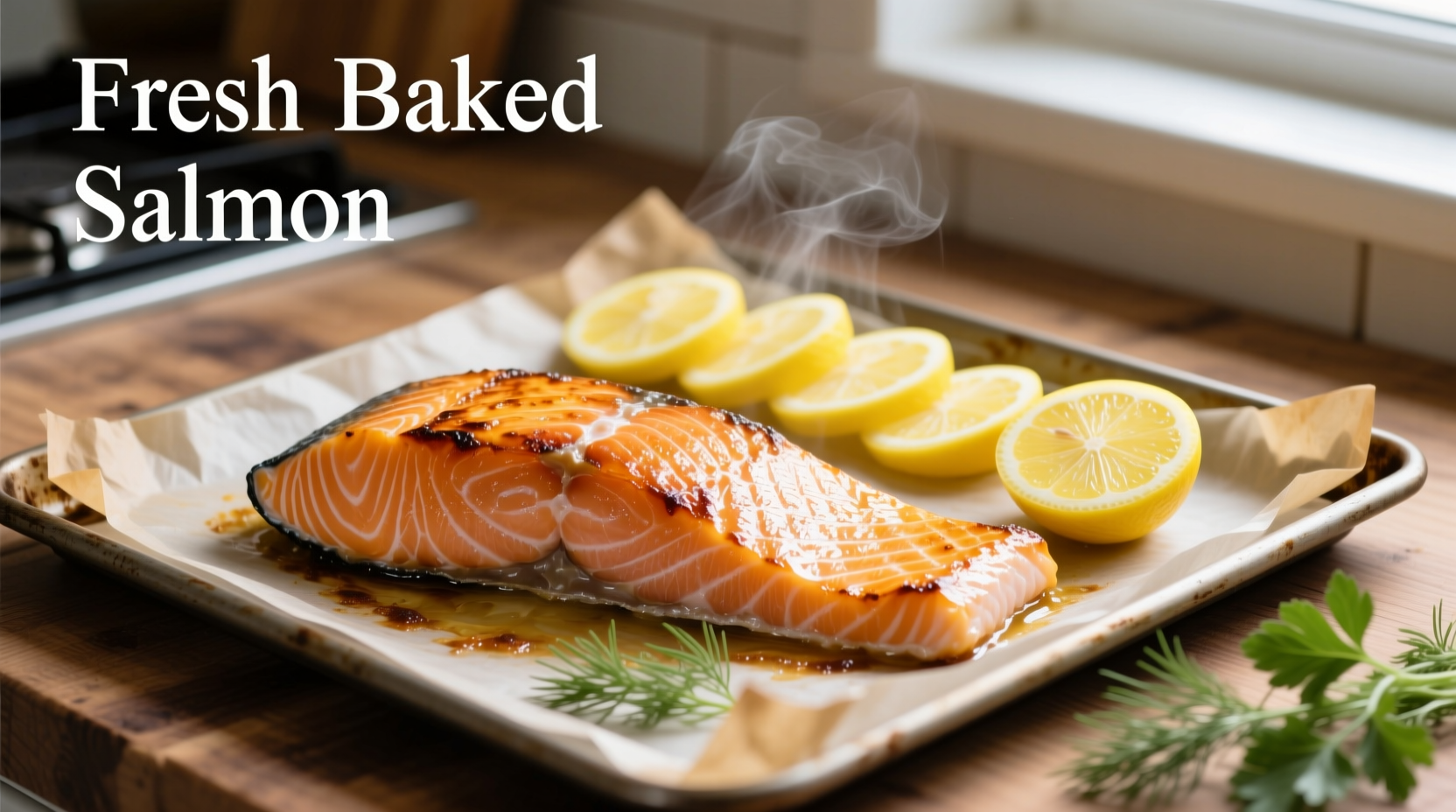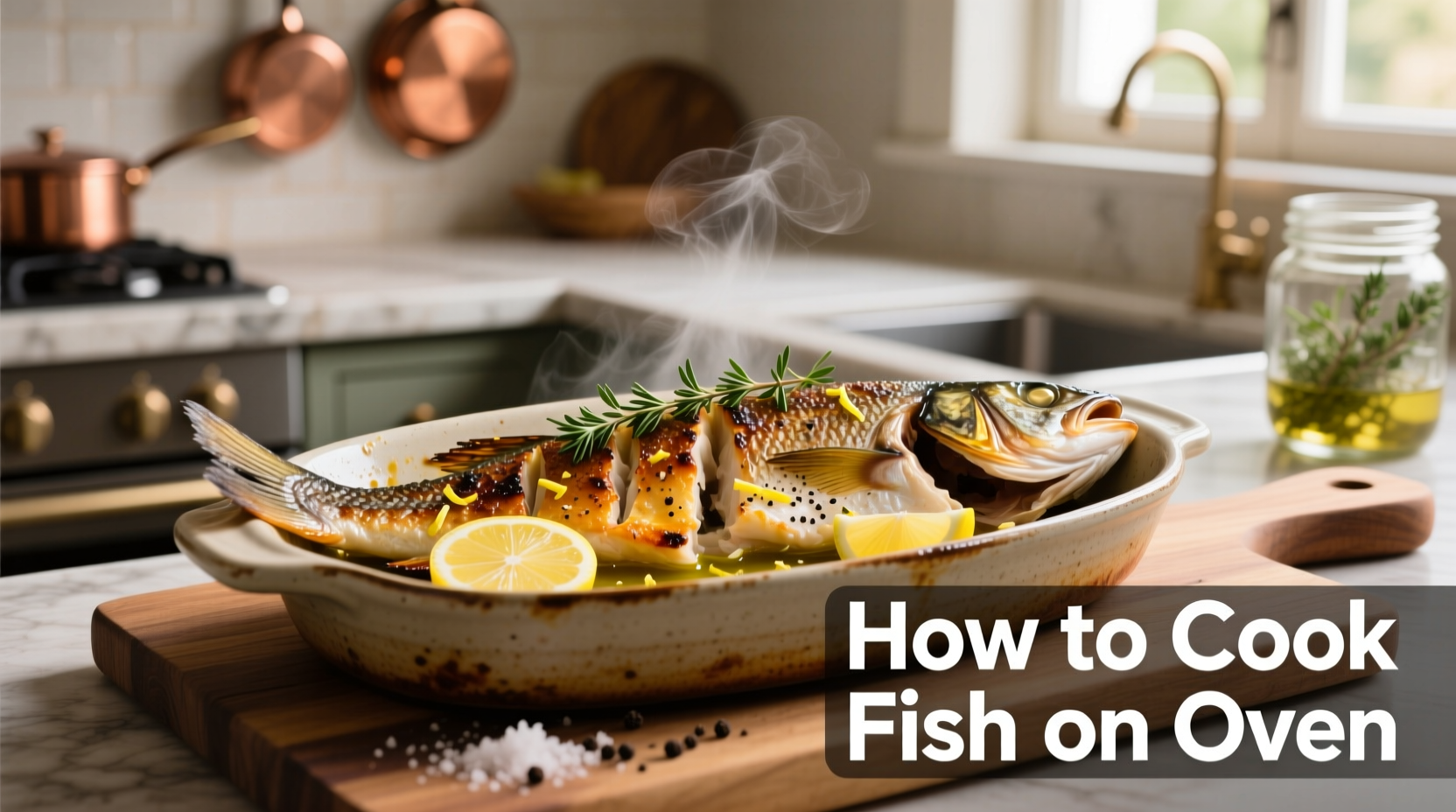Master Oven-Baked Fish: Your Complete Step-by-Step Guide
Nothing beats the simplicity of oven-baked fish for a healthy, flavorful meal. Unlike pan-frying that requires constant attention, baking fish in the oven delivers consistent results with minimal effort. Professional chefs rely on this technique for its reliability, and with these expert-tested methods, you'll achieve restaurant-quality results at home.
Why Oven-Baking Outperforms Other Cooking Methods
Oven-baking preserves delicate fish textures better than high-heat methods. The controlled environment prevents overcooking while allowing even heat distribution. Unlike grilling which can cause sticking or pan-searing that risks breaking fragile fillets, the oven provides hands-off cooking that maintains structural integrity. This method also accommodates multiple portions simultaneously—perfect for family dinners.

Your Fish Selection Checklist
Not all fish respond equally to oven cooking. Choose wisely for best results:
| Fish Type | Best For Oven? | Special Considerations |
|---|---|---|
| Salmon, Mackerel, Arctic Char | Excellent | Fatty fish stay moist; reduce oil slightly |
| Cod, Haddock, Halibut | Very Good | Wrap in parchment for extra moisture protection |
| Tilapia, Flounder | Good | Cook skin-side down; shorter cooking time |
| Swordfish, Tuna Steaks | Fair | Better seared first; monitor closely to avoid dryness |
According to the USDA Food Safety and Inspection Service, proper fish selection prevents foodborne illness while ensuring optimal texture. Their research confirms that thicker cuts (1 inch/2.5 cm) provide the most forgiving cooking margin, reducing the risk of overcooking common with thinner fillets. Always purchase fish with firm flesh and a fresh, ocean-like scent—never fishy.
Preparation: The Critical First Steps
Proper preparation makes the difference between dry, bland fish and moist, flavorful results:
- Dry thoroughly with paper towels—moisture is the enemy of proper browning
- Bring to room temperature for 15-20 minutes before cooking (cold fish cooks unevenly)
- Season under the skin for maximum flavor penetration
- Oil the fish, not the pan—use high-smoke point oils like avocado or grapeseed
- Preheat oven to 400°F (204°C)—never put fish in a cold oven
The Perfect Cooking Process
Follow these steps for flawless results:
1. Pan Selection Matters
Use a rimmed baking sheet lined with parchment paper or a glass baking dish. Metal conducts heat faster but glass provides more even baking. For delicate fish, consider the en papillote method (baking in parchment packets) which traps steam for ultra-moist results.
2. Temperature & Timing Precision
The magic formula: 10 minutes per inch of thickness at 400°F (204°C). Measure at the thickest part. For example:
- 1-inch thick fillet: 10 minutes
- 1.5-inch thick steak: 15 minutes
- Whole fish (2-inch): 20 minutes
Insert an instant-read thermometer into the thickest part—145°F (63°C) is the USDA-recommended safe internal temperature where fish becomes opaque and flakes easily.
3. Doneness Indicators
Don't rely solely on timing. Check for these visual cues:
- Fish turns from translucent to opaque
- Flesh flakes easily with fork pressure
- Slight resistance when pressed (not mushy)
- Edges begin to curl slightly
Troubleshooting Common Problems
Dry or Overcooked Fish
Solution: Reduce cooking time by 2-3 minutes. Use the thermometer religiously. For lean fish, add moisture barriers like lemon slices, herbs, or a light broth drizzle before baking.
Sticking to the Pan
Solution: Ensure proper preheating and sufficient oil application. Wait until fish releases naturally before attempting to flip—forcing it causes breakage.
Uneven Cooking
Solution: Arrange thicker portions toward the oven's back (usually hotter area). Rotate the pan halfway through cooking for even exposure.
Pro Chef Techniques for Elevated Results
Transform basic baked fish with these professional methods:
- Brine for moisture retention: Soak in 4 cups water + 1/4 cup salt for 15 minutes before cooking
- Flavor layering: Place aromatics (shallots, lemon, herbs) beneath the fish
- Finishing touch: Add cold butter cubes during last 2 minutes for glossy sauce
- Crispy skin technique: Start at 425°F (218°C) for 5 minutes, then reduce to 375°F (190°C)
Serving Suggestions That Impress
Complete your dish with these pairings:
- Simple sauces: Lemon-dill yogurt, cilantro-lime crema, or browned butter with capers
- Perfect sides: Roasted asparagus, quinoa pilaf, or tomato-cucumber salad
- Garnish game-changer: Microgreens or flaky sea salt added just before serving
Remember to let fish rest for 3-5 minutes after baking—this allows juices to redistribute for maximum moisture. Serve immediately for the best texture and flavor experience.











 浙公网安备
33010002000092号
浙公网安备
33010002000092号 浙B2-20120091-4
浙B2-20120091-4